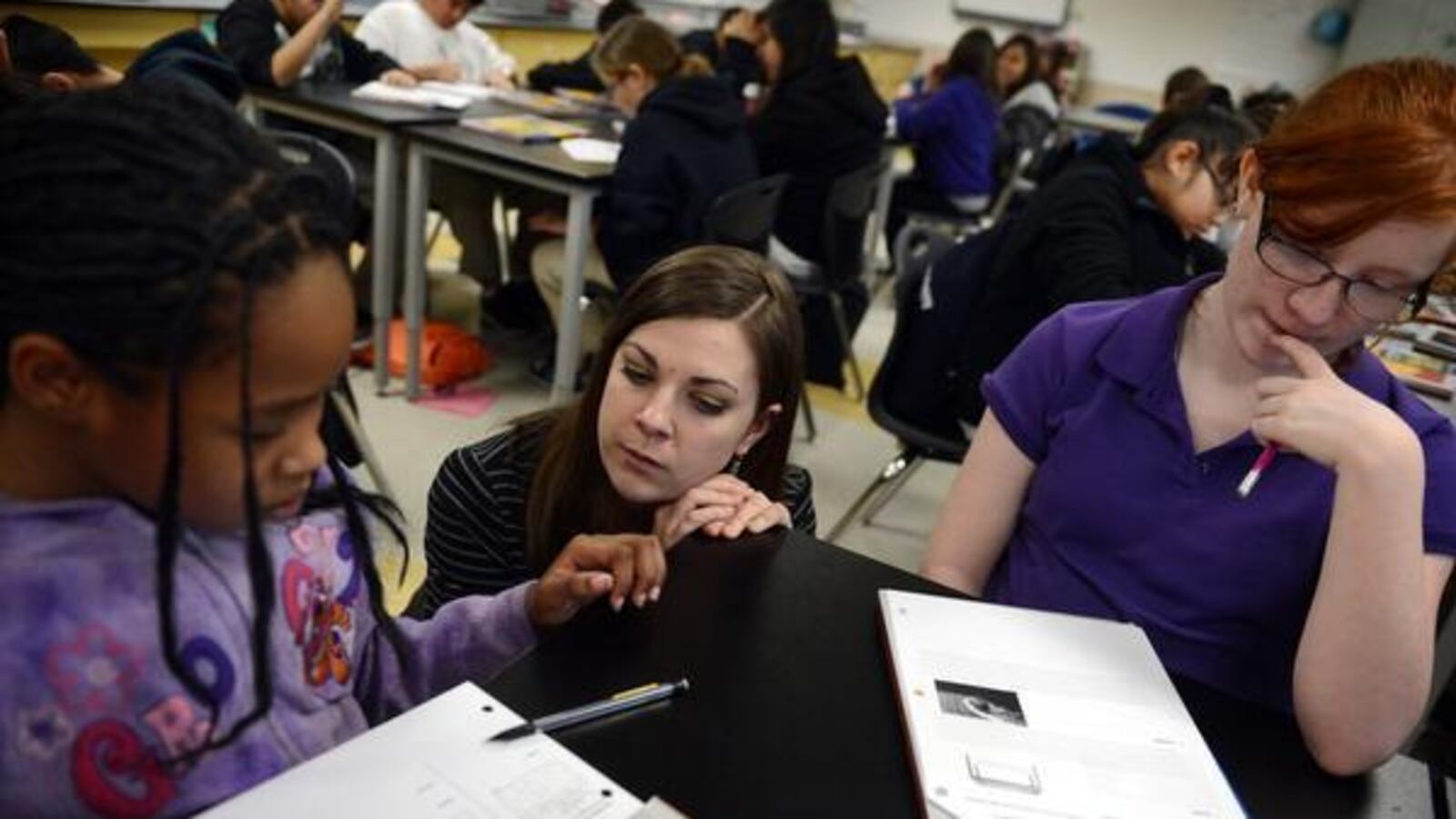As part of an improvement plan negotiated with the state, the Adams 14 school district in Commerce City has developed a new system for monitoring progress at schools meant to more quickly arm leaders with information about what’s working and what isn’t.
The system, developed with guidance from the state, includes regular walkthroughs at schools by district leaders, data tracking, and new staff and student surveys.
Such diligent tracking of school performance is more common at larger districts, and could be seen as a burden for districts with fewer resources. But Adams 14 officials say they are welcoming the opportunity and are optimistic about the benefits.
“What doesn’t get monitored doesn’t get done,” said Aracelia Burgos, chief academic officer for the 7,500-student district. “…. We know we need to be data-driven.”
The process will kick into gear starting next month, when district leaders begin weekly walkthroughs of all 11 schools and an early learning center. Different leaders are assigned different schools, and those in the mix include Superintendent Javier Abrego, the chief academic officer, director of English language development and director of educator effectiveness.
Three of the visits will be brief — checking on whether the school feels welcoming, safe and whether students are engaged.
Then, once a month, the school visit will be more formal. District leaders will follow a sort of rubric that is being finalized with the state to determine if teachers are doing good work and if students seem to be learning.
Several other districts on state improvement plans are in the process of creating similar plans. Adams 14 was among the schools and districts that faced state intervention because of more than five years of low performance, based in part on an increasing drop-out rate and low growth scores on state tests.
Without a system of its own, Adams 14 would be reliant on school ratings provided by the state, which are based mostly on state test scores and are not as timely.
Among larger districts that track their own schools’ performance, Denver Public Schools has a more elaborate system that includes giving each school a rating that takes more factors into account than the state ratings.
The same system wouldn’t necessarily be feasible for a district the size of Adams 14, district officials have said.
The point of any system, however, is for district officials to be engaged with what’s happening in schools, and knowing how they’re performing early on, rather than waiting for a state rating.
Eventually, the monitoring plan should improve school performance if district leaders are able to detect problems early on and respond quickly to fix them. It should also create a record of what has been tried and what has worked that could help if district officials want to contest a state rating of their schools or district in the future.
“The first bar is really, ‘Did you design something?’ and second is, ‘Are you implementing it?’” said Lisa Medler, executive director of improvement planning for the state. Medler has worked with Adams 14 officials to design their school monitoring process.
The Colorado Department of Education is thinking about how to create a template for district-level school monitoring, Medler said. But the benefit of each district working on its own plan is that it’s tailored to the district’s own goals and resources, especially since the requirement to create the plan doesn’t come with funding for it. (Adams 14 officials said its new school monitoring system does not carry any additional costs).
“It’s really built on their context,” Medler said. “It’s taking advantage of whatever assessment tools, like interim or benchmark tools they have already.”
To make tracking data easier, all seven elementary schools are now using the same district-level periodic tests to measure growth rather than getting to pick their own. And to make sure the information is used, teachers now have built-in common planning time for about an hour a week.
Once a month, when district leaders visit schools for the longer walkthrough, they’ll also sit down with school leadership to look at test and attendance data. The monitoring plan has target goals for how many students are on reading plans, for attendance rates and growth scores on interim tests.
If the district leaders see a school isn’t meeting those targets throughout the year, they could order teachers to do an online training course or they could ask a coach to work with them.
When district leaders find a teacher doing great work, the district will record that teacher in action and make it available online for the other district teachers to learn from.
“We want to be supportive,” said Cynthia Trinidad-Sheahan, the director of educator effectiveness and director of secondary education. She started some school observations last year working with a consultant and more narrowly looking at work in classrooms.
From that experience, Trinidad-Sheahan said she knows the classroom and school monitoring needs to create ongoing conversations to be successful.
The new process already has made the district’s leadership team more effective at working together, officials say.
“It’s a lot of energy for us because we’re such a small community,” Burgos said. “Now that we’ve come together as a cohesive group, that’s important and we’re feeling very confident.”

